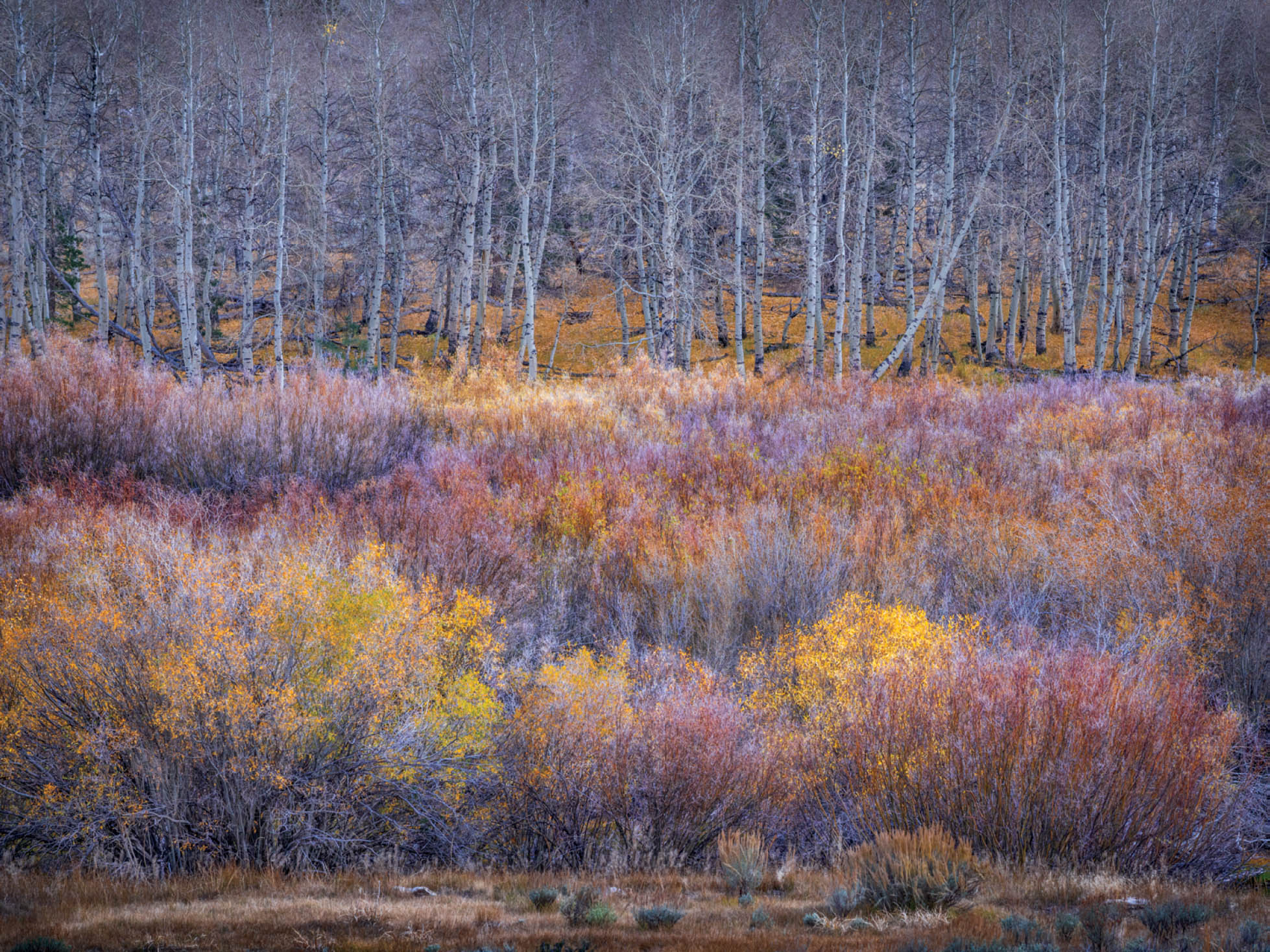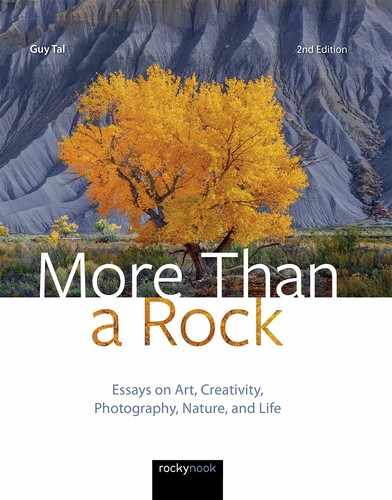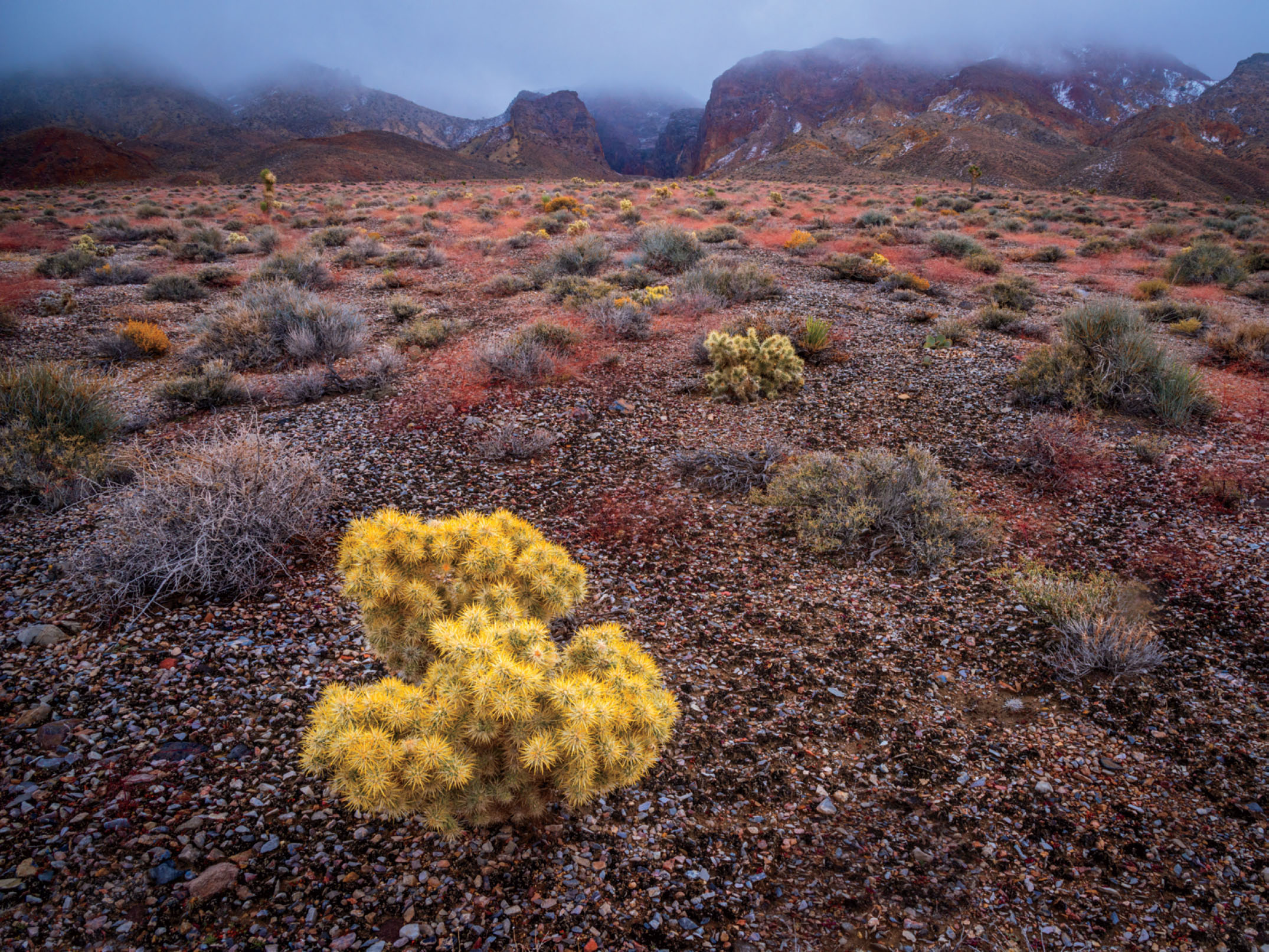10No Lesser an Art
Photography is not an art. Neither is painting, nor sculpture, literature, or music. They are only different media for the individual to express his aesthetic feelings. . . . You do not have to be a painter or a sculptor to be an artist. You may be a shoemaker. You may be creative as such. And, if so, you are a greater artist than the majority of the painters whose work is shown in the art galleries of today.
—Alfred Stieglitz
Now back from my autumn travels, I feel fortunate to have witnessed extraordinary beauty as I drove and hiked in my beloved deserts of the American West. I started my journey on Utah’s high plateaus, catching the last of the golden foliage in the aspens mixed with early snow, before descending into the southern canyons to see maples turning red and small creeks flush with recent rains. Exiting the sandstone wonderland of the Colorado Plateau I entered the Mojave Desert, where I walked among Joshua trees, creosote bushes, barrel and cholla cacti, and breathed in the intoxicating air of a wet desert.
Along the trip, I also managed to visit four photography galleries and admired the fine works of photographers working in the region. It occurred to me that only one of the galleries I visited offered information referring to the photographer as “The Artist,” and that practically all the works I had seen were explicitly promoted as representational in nature, some going out of their way to proclaim the use of “natural” light and “traditional” processes, perhaps attempting to assert that these somehow elevated their work’s value, while in fact shifting much of the credit away from the photographer’s creative mind and attributing it instead to natural forces, technology, chance, and chemistry.
It is no wonder that artistic photography featuring natural subjects struggles to claim a place among the fine arts when photographers shy away from creative expression and are quick to dismiss their own role in their work beyond the mechanics of operating a camera, scouting scenic locations, or making a print, thus reducing themselves to mere spectators and operators of machines rather than creative artists, and being more concerned with literal transcription than expressed metaphorical significance.
It seems that most consumers of photography have come to expect photographs portraying natural subjects to be heavily slanted toward representation of things already in existence, while artistic photography often is perceived as having to do with decidedly obscure and abstract renditions; often focused on humanity’s antics, enterprises, and tragedies, commonly referred to as “the human condition.” Caught in between, creative nature photography understandably suffers from an identity crisis. In truth, it fits neither category and should be entitled to exist independent of such prejudices.

That photography as creative art should be allowed the same degree of creative freedom as other artistic media is among the creeds not only of photographic artists from the Pictorialist era, but also of such movements as the Brotherhood of the Linked Ring and the Photo-Secession movement; and a great degree of such freedom was also claimed by proponents of what is known as “straight” photography, including Group f/64, New Topographics, and numerous independent photographic artists. Yet, today, when seemingly everyone is a photographer and every inkjet print is stamped “fine art,” and much of the lore of photography’s past has been drowned out by social media “influencers,” bloggers, vloggers, and a plethora of equipment reviews, many of the lessons of the past have apparently been forgotten. Audiences, drowning in an ocean of photographic images with few beacons to help chart the waters, and few maps to warn of dragons or point out safe harbors, seem oblivious to the distinction between the creative and the representational.
Many photographic publications, contests, and institutions further inhibit creativity by imposing guidelines so strict as to disqualify the works of even the most venerable photographic artists of old, causing present-day photographers to fear embracing their own creativity lest their work be tarnished with such ignorant labels as “manipulated” or “Photoshopped.”
There is more at stake than benign prejudice. The very future of photography as a legitimate medium for art hangs in the balance. All art involves manipulation of materials, and lumping all products of a camera into a single category, to be judged by one set of criteria, is as silly as bundling together impressionistic masterpieces with engineering drafts or comic strips. Not all photographs are meant to serve the same purpose.
Art should be about creative expression of subjective ideas and sensibilities, in whatever media and by whatever methods. Whether the tool is a paintbrush, a chisel, a camera, or a computer program should have no bearing on the validity of artistic work. Neither should the processes involved in the production of art dictate its worthiness. A photograph rendered on film is no more or less worthy than one captured digitally, just as a novel written on paper is no more or less worthy, by this one distinction, than one typed into a word processor.
To deny artists freedom of expression because of prejudice about their tools is an affront to art, and any art in which creators are systematically denied the privilege of personal choice and subjective expression is a lesser art (or no art at all). One cannot hold the view that photography can serve as an artistic medium while at the same time demand that photography remain beholden to representation of objective reality, or dependent on traditional methods.
To practice photography as art is not about successfully exposing film or a digital sensor to make an accurate record of reflected light; it is about what one does with that record. Much as painters must work within the constraints of the palette, brushes, and substrates available to them, and sculptors within the qualities of a given piece of rock, so do photographers have to work with the materials available to them and within their own self-imposed boundaries; but no artist should be required to create within draconian limitations founded in prejudice and ignorance, in order for their work to be considered valid. Submission to such considerations diminishes both the art and the artist.

